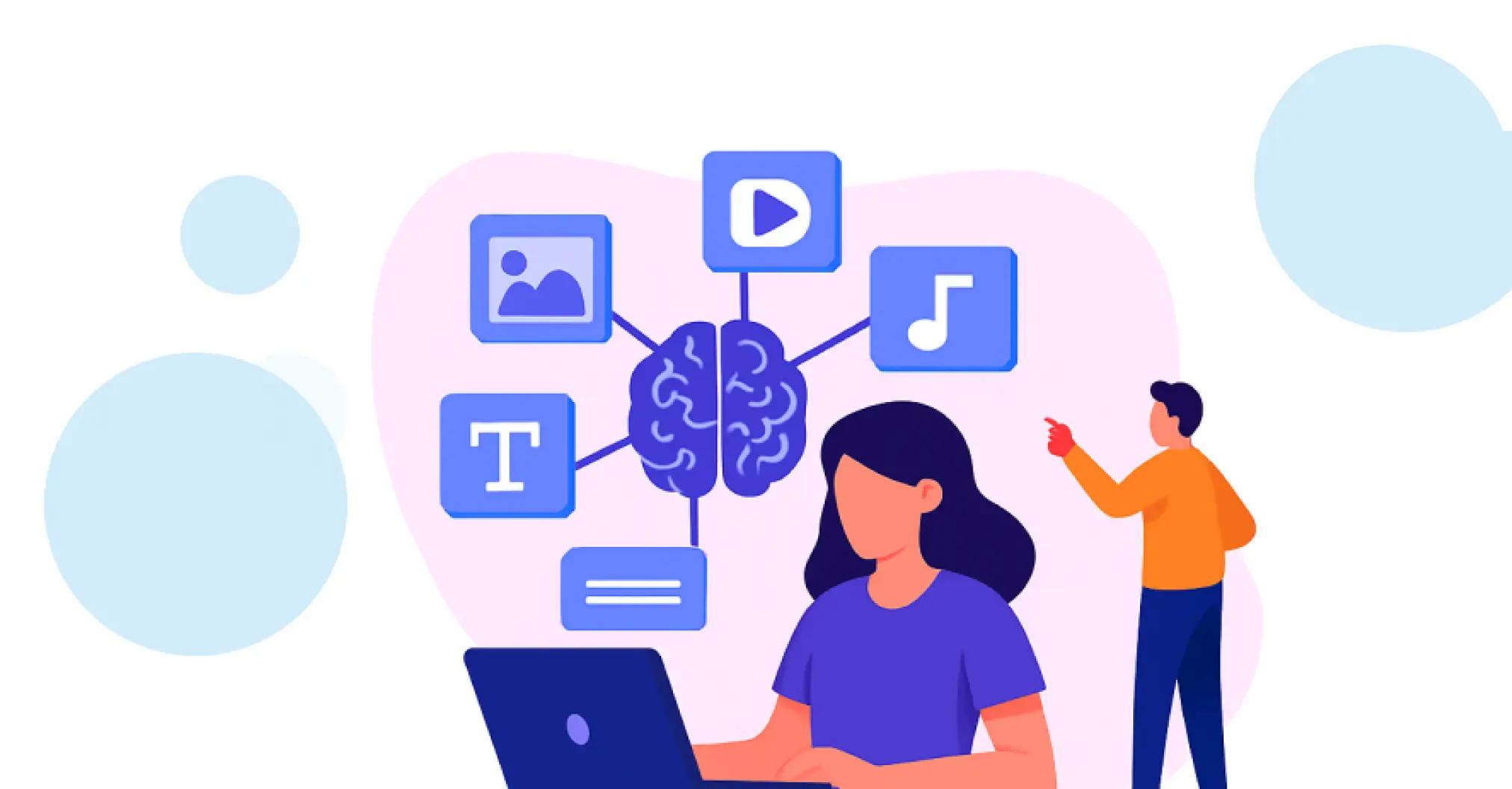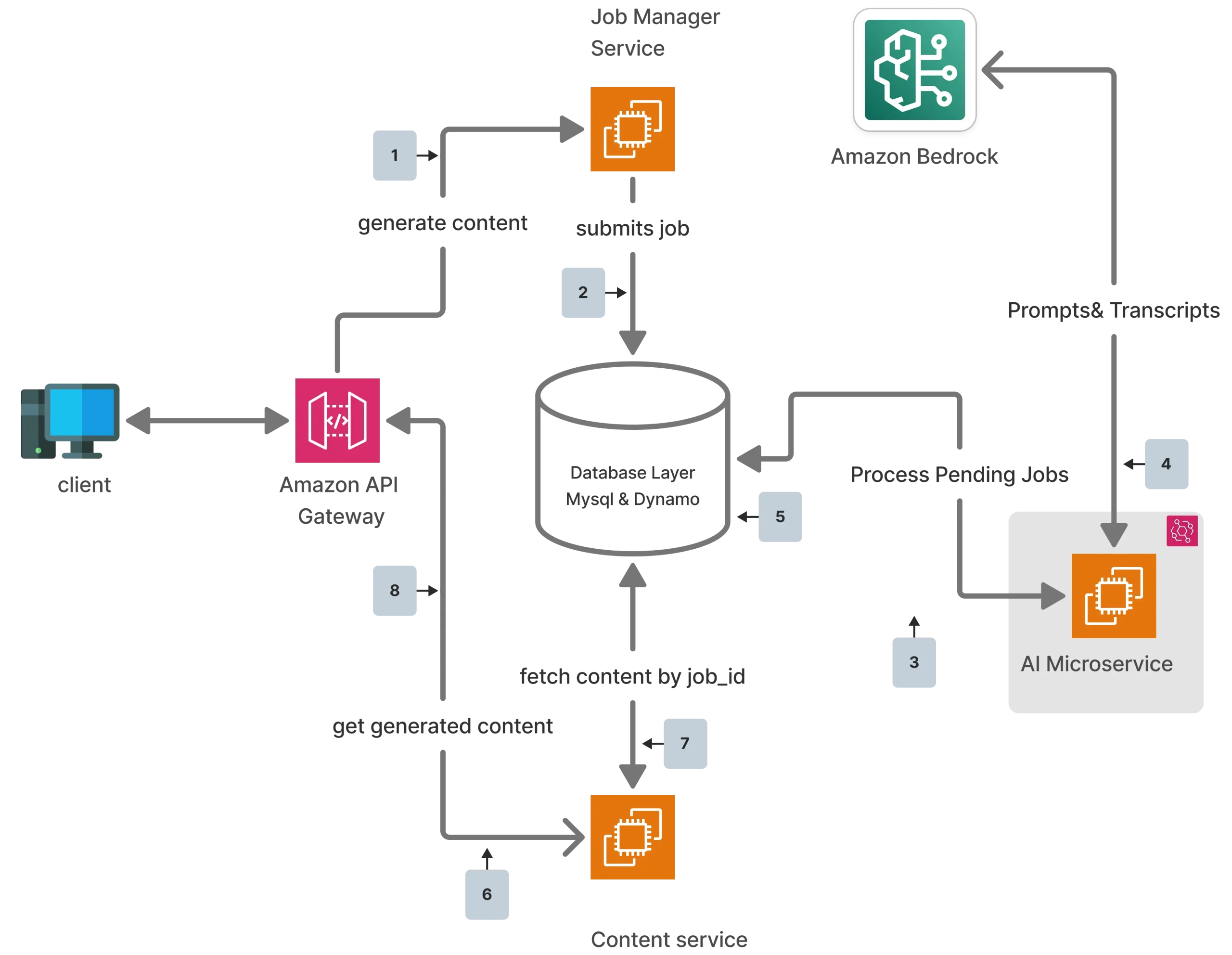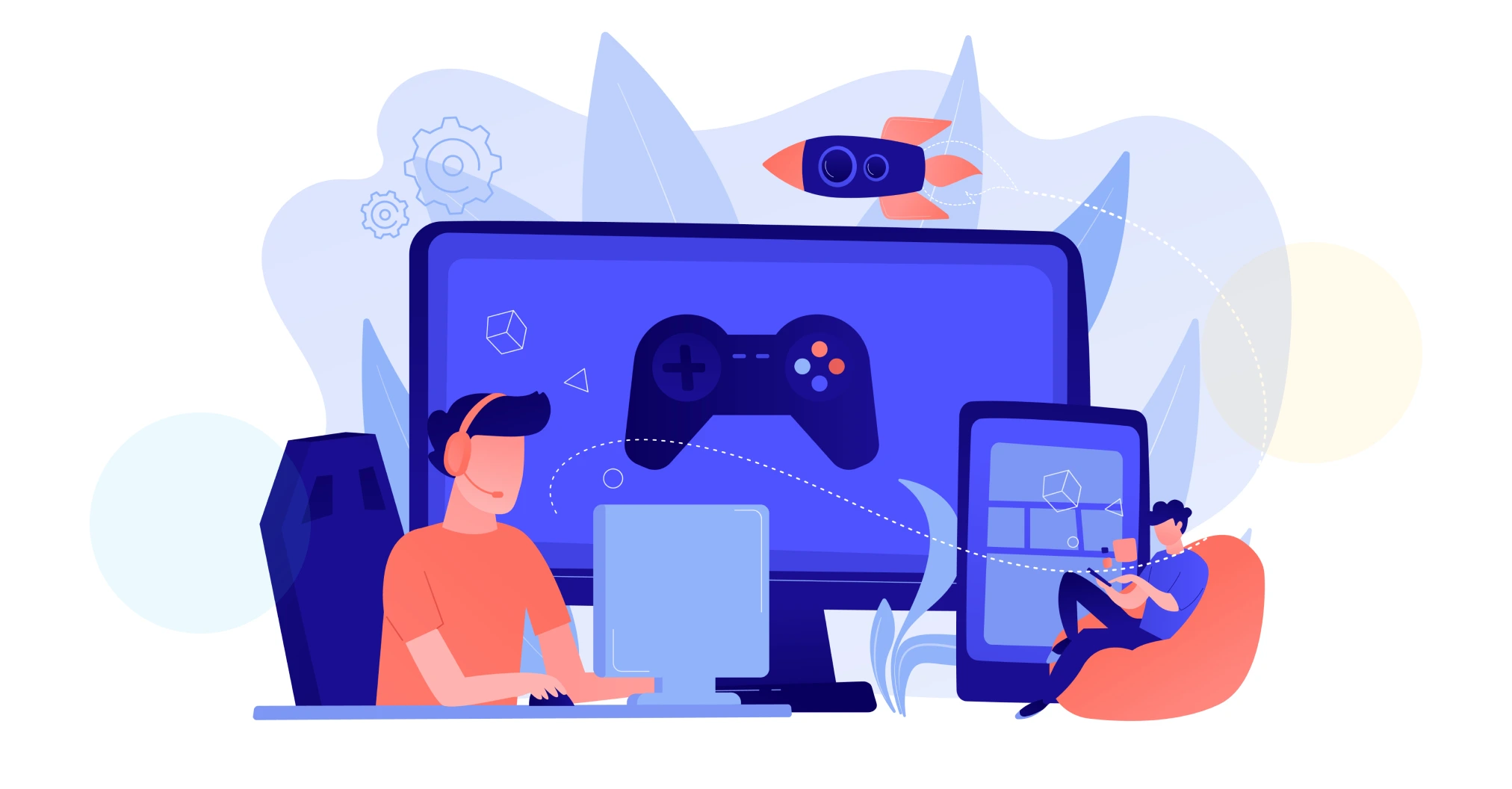Project Name
AI-Powered Media Content Generation for EdTech Platform

![]()

A media-focused EdTech platform delivering video, audio, and presentation-based learning content is needed to boost student engagement and instructor productivity. To achieve this, Ksolves introduced an AI-powered content generation feature that automatically creates educational assets such as titles, summaries, FAQs, quizzes, and study cards using AWS Bedrock.
This system was designed with flexible permissions, intelligent content toggles, modular microservices, and versioning to enable seamless content creation across various academic hierarchies, including terms, courses, sections, and sessions.
- Complex Role-Based Permissions: The platform had multiple user roles (students, instructors, admins), each requiring distinct access levels for generating, viewing, and editing AI-generated content. Designing a permissions system that was both secure and intuitive was a significant challenge.
- Enforcing Media Engagement Without Disruption: The requirement to restrict access to certain AI-generated content (such as quizzes and FAQs) until students have watched at least 80% of a media item introduces challenges in maintaining a smooth user experience while enforcing academic rigor.
- Content Generation Flexibility vs. UI Simplicity: Users needed fine-grained control over which content elements to generate (e.g., only a title or only a summary). Implementing this without overloading the UI or confusing users was a balancing act.
- Handling Multiple Versions Without Clutter: Supporting multiple regenerated versions of the same content while preventing user confusion and maintaining version traceability posed both UX and data management challenges.
- Scalability of AI Workflows: The concurrent generation of multiple types of content (summaries, quizzes, FAQs, etc.) introduced performance bottlenecks in earlier prototypes, particularly as usage scaled across courses and media.
- Data Storage Optimization: The dual-storage approach (utilizing MySQL for structured content and DynamoDB for more dynamic/generated data) required a clear strategy to prevent inconsistencies, redundancy, or data loss.
- Extensibility for Future AI Content Types: Future-proofing the system to accommodate new types of AI-generated content (like transcripts or visual aids) without reengineering core components was critical, yet challenging.
Ksolves delivered a robust AI-powered content generation engine with the following core components:
- Role-Aware Access Control System: To address complex user-role dynamics, we implemented a permission layer that maps capabilities precisely to roles. Students can only generate content for their own media and are restricted from editing AI-generated assets, while instructors and admins have full control over generation, editing, and version visibility.
- Threshold-Based Content Unlocking: We introduced a conditional access mechanism that unlocks advanced AI-generated content (like quizzes and study cards) only after students view at least 80% of the media. This ensures academic engagement without disrupting the learning flow.
- Granular Toggle-Based Generation Interface: To avoid overwhelming users while offering flexible content generation, we built a toggle-based UI. Users can select specific content types (titles, FAQs, summaries, etc.) for generation or regeneration, maintaining a simple interface for complex functionality.
- Versioning System with Role-Specific Visibility: Each content regeneration is stored as a new version. Instructors and admins can preview and select which versions to publish to students, enabling controlled iteration and experimentation without affecting the learner’s experience.
- Job-Oriented Microservice Architecture: To handle performance and scalability, we implemented a decoupled job-based architecture. Each content generation request becomes a job that’s asynchronously processed by specific handlers, allowing for parallel execution and real-time UI updates through a central Gateway Manager.
- Hybrid Data Persistence Model: We adopted a dual storage strategy, i.e., storing structured content in MySQL and flexible/generated content in DynamoDB. This allowed for both relational querying and fast, scalable access to AI-generated data, while job metadata remained centralized in MySQL for traceability.
- Plug-and-Play Content Expansion Framework: To ensure long-term extensibility, we built the system on a modular job-type model. New AI-generated content types can be added by introducing new handlers and toggles, without modifying core services or workflows.
- Enhanced Learning Outcomes: Students benefit from structured, AI-enhanced educational media.
- Empowered Educators: Instructors quickly scale content creation with AI support.
- Faster Content Turnaround: Job-based automation significantly reduces preparation time.
- Increased Student Engagement: Conditional access incentivizes media completion.
- Scalable Architecture: Microservices ensure easy maintainability and extensibility.

By implementing a modular, AI-powered content generation system, Ksolves successfully addressed the platform’s key challenges, ranging from complex role-based permissions to real-time media engagement tracking and scalable job orchestration.
The solution not only automated content creation but also introduced conditional access logic, version control, and future-ready extensibility. This allowed instructors to manage content more efficiently and enabled students to engage more deeply through AI-curated learning assets.
With its microservices-driven design and AWS Bedrock integration, the platform is now equipped to scale intelligently, support rapid feature rollout, and adapt to evolving educational needs, positioning it as a next-generation EdTech solution.
Accelerate AI-Powered Learning in Your Edtech Platform.






